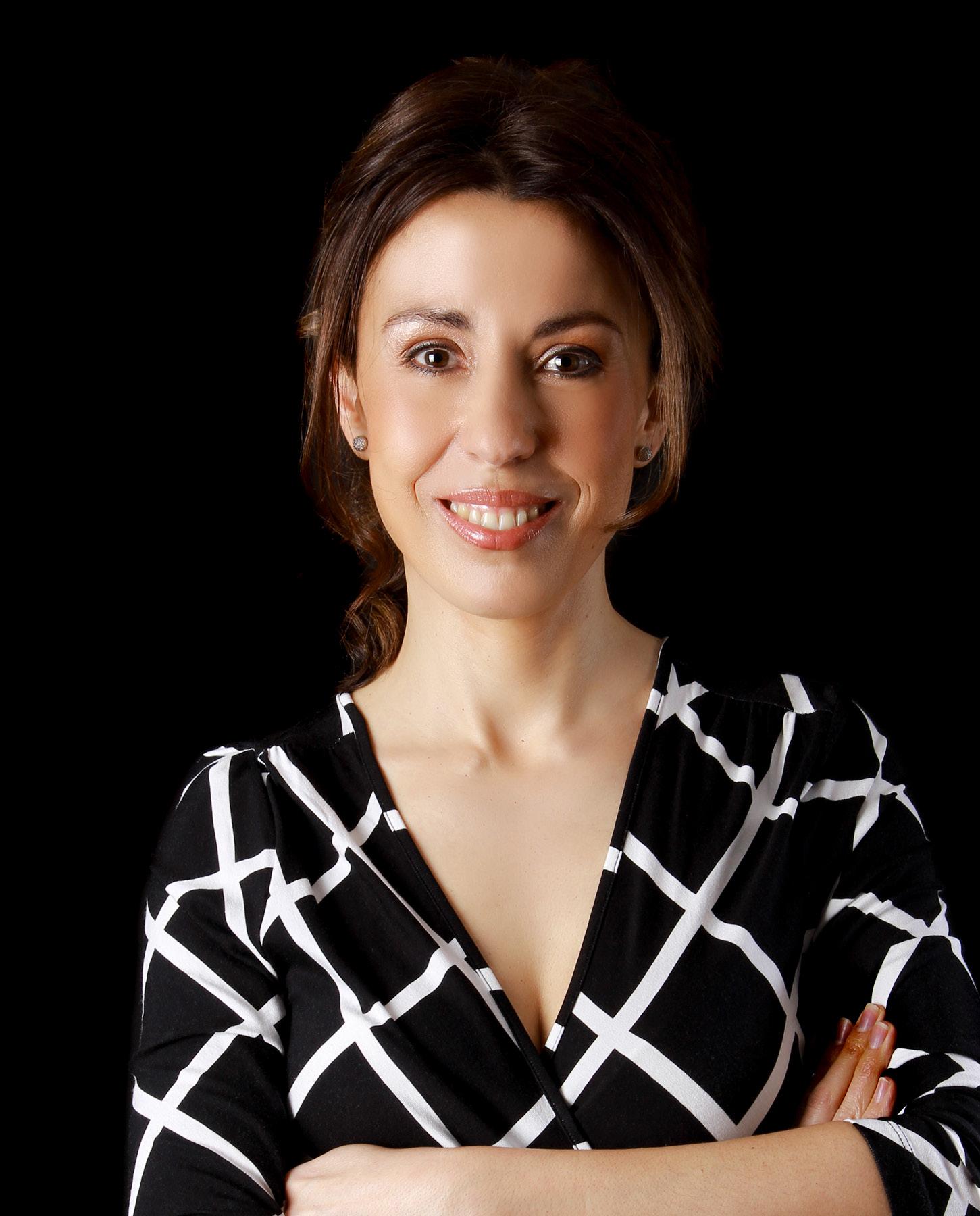
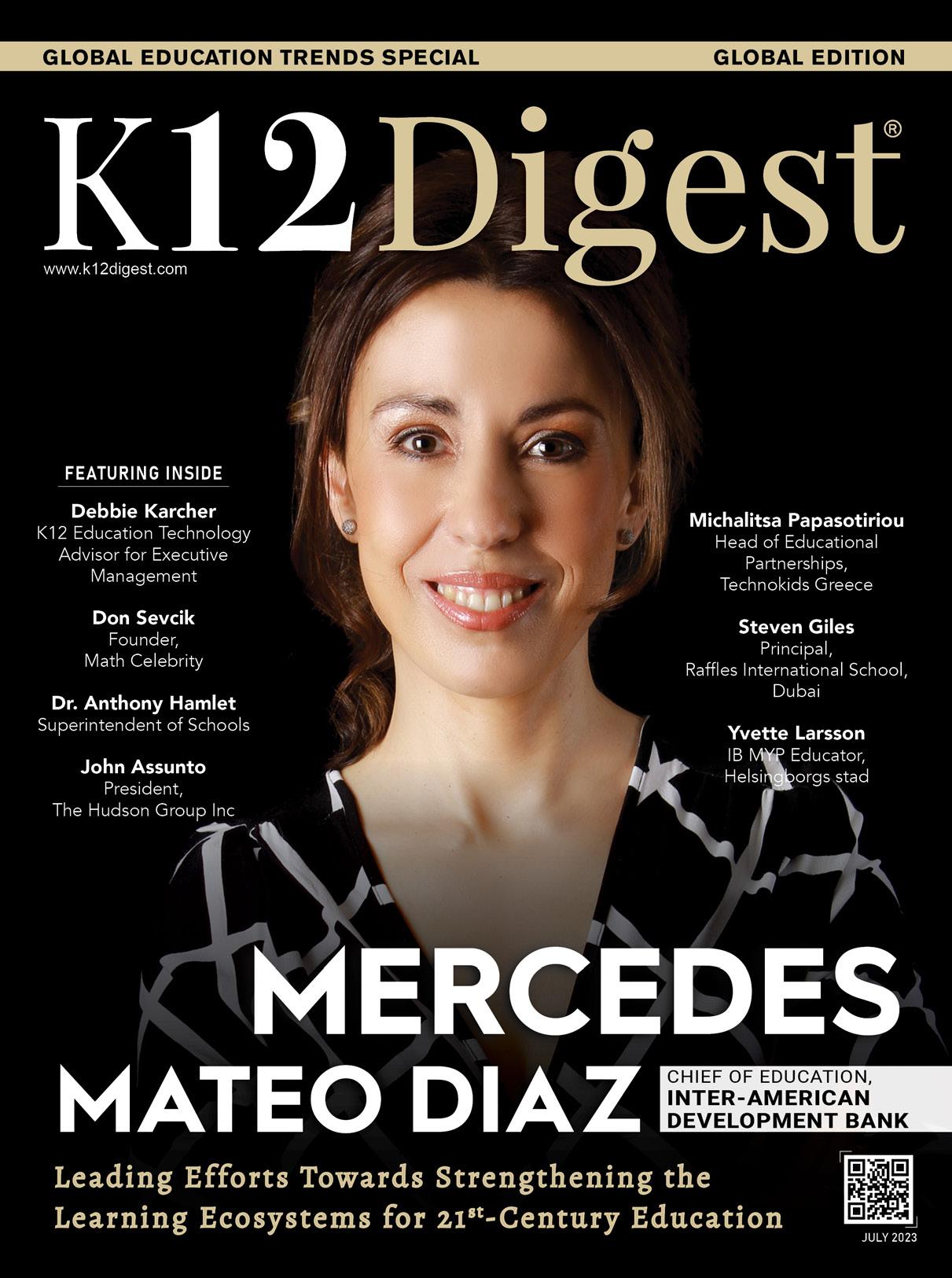







Managing Editor
Sarath Shyam
Consultant Editors
Dr. John Andrews
Emma James
Andrew Scott
Naomi Wilson
Stanly Lui
Joseph Alex
Art & Design
Charlie Jameson
Jennifer Anderson
Alice Smith
Monica Davis
Anna Elza
Sales & Marketing Enquiry admin@K12digest.com
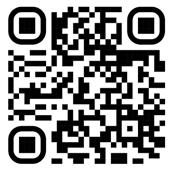
International Representation
Americas
16192 Coastal Highway, Lewes, DE 19958, USA
Europe
27, Old Gloucester Street, London, WC1N 3AX, UK
Middle East & Africa
P.O. Box 48299, Dubai Silicon Oasis, Dubai, UAE
Asia-Pacific
Ramanashree Arcade, 18 MG Road, Bangalore – 560001, India
K12 Digest is a digital magazine published by Connecta Innovation Private Limited. All rights reserved. The opinions expressed in the content and pictures provided are those of the authors. They do not purport to reflect the opinions or views of the Connecta Innovation Private Limited or any of its members and we do not assume any responsibility. The publisher does not assume any responsibility for the advertisements, its content, pictures, and all representation of warranties made in such advertisements are those of the advertisers and not of the publisher. K12 Digest is a Free Subscription digital magazine strictly not for sale and has to be strictly for internal private use only. Publisher does not assume any responsibility arising out of anyone printing copy of this digital magazine in any format and in any country and all matters related to that.
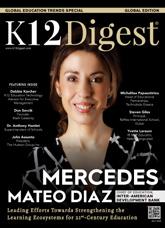


The K-12 education sector is experiencing a transformative shift driven by technological advancements, changing student needs, and innovative pedagogical approaches. As academicians, it is crucial to remain aware of the latest trends to prepare ourselves for the future of school education. In this issue, we will explore some of these trends and provide insights on how educators can update their knowledge to stay relevant.
The first trend is personalized learning, which tailors teaching methods and content to suit individual student strengths, weaknesses, and learning preferences. Embracing adaptive learning technologies, data analytics, and formative assessments enables academicians to identify students’ needs and provide targeted interventions, fostering better learning outcomes.
Secondly, the integration of educational technology (EdTech) has revolutionized classrooms. Interactive whiteboards, educational apps, virtual reality, and augmented reality tools enhance engagement and knowledge retention. Academicians must proactively explore and adapt to new EdTech solutions to create an interactive, dynamic learning environment that resonates with modern students.
Project-Based Learning (PBL) is another trend that encourages students to explore real-world challenges collaboratively. By adopting PBL, academicians can nurture critical thinking, problem-solving, and teamwork skills, empowering students to be proactive learners.
Lastly, a crucial trend focuses on Social-Emotional Learning (SEL), which emphasizes emotional intelligence and well-being. Academicians must prioritize students’ emotional development, teaching resilience, empathy, and stress management. Creating a safe and supportive learning environment is vital for fostering well-rounded individuals who can navigate life’s challenges.
On the cover, we feature Mercedes Mateo Díaz, the Education Division Chief at the IDB Group, where she leads an ambitious initiative to rethink education and strengthen the learning ecosystems to equip citizens with 21st-century skills. She coordinates the research, design, and execution of innovative education projects. Her work covers different areas of international development and social policy, strongly emphasizing inequality. Enjoy Reading.
Sarath ShyamFormer International School Principal, Former Group Project Director at a World Class Learning Group, Education Consultant - Wright Solutions, United Kingdom

Founder & CEO - Paths to Math Ltd, Former Mathematics Teacher and Principal, Global Teacher Prize Finalist, Finland




Principal, Rundle College, South Africa
Asst. Prof. Dr. Poonsri Vate-U-Lan
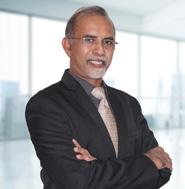
Chief Education Officer, New Nordic School, Finland
Exceptional Educator from Serbia, Founder of Association of the Best Teachers of the Former Yugoslavia, Founder of Magical Intercultural Friendship Network, Founder of Creative Magic - Children’s International Festival, Founder of Magic Village, Serbia
Assistant Professor in Education, Ph.D. Supervisor and Researcher, Thailand
Senior Educationist, Author, Keynote Speaker, Co-founderTríade Educacional, Brazil
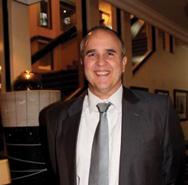
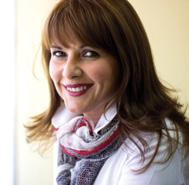
Palmans
Former Director School Administration & Business Operations (Large Education Group), Chief Operating Officer - BBD Education, Netherlands & UAE
Chief of Digital Learning and Development, Norwalk Public Schools, Connecticut, United States
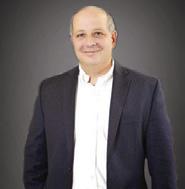
Senior Teacher‘Pashko Vasa’ school Shkodra, Exceptional Volunteer, Albania
English and Literature teacher, Owner of “The Smart Teens Studio of English” in Belgorod, Russia
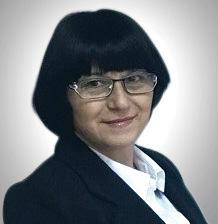
Former Program Director, MS in Management Program, GSATM - AU, Thailand & India
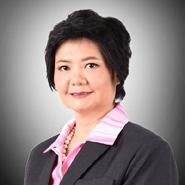
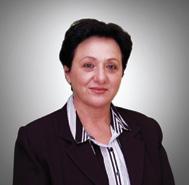
Founder & National President - ATAST, General director of IFEST² the international projects competition in Tunisia, General secretary of MILSET Africa, BRISECC member, Tunisia

Global Teacher Prize Finalist 2019, 15 International Awards on STEM, STEM Instructor, Educator, Neuroscience Researcher, Trainer & Author, Greece
Dr. Venus M. Alboruto Kihyun Park
Master Teacher, Researcher, Innovator, Trainer, Philippines
Deputy Head and Dean of Faculty, Dalton Academy, Beijing, China
Shady Elkassas
Director of Innovation


Al Ittihad National Private School-Al Ain, United Arab Emirates
Former Vice President Security (Large Education Group), Former British Army Officer (Airborne Forces), Senior Advisor – Resilience and Crisis Management (Emerald Solutions Group), United Kingdom & UAE
Innovative English and ICT Teacher, Author, Japan

Innovative Educator of Online Classroom, Pungsaeng Middle School, South Korea

Master Teacher, Speaker and Researcher, Philippines


Revolutionary English Educator, Globally Connected English Studio - Hanoi, Vietnam
EdTech Specialist, Speaker and Teacher Trainer, Innovative ICT Educator, ICT learning multimedia developer, Indonesia
Distinguished Senior EFL Teacher, ISA Coordinator with the British Council, Motivational Speaker, Tunisia

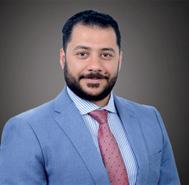

Juan Manuel Pico Co-founder & Managing Partner, Education Soul, Colombia
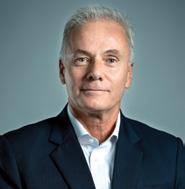
Mr. Ngô Thành Nam
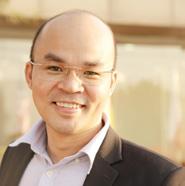
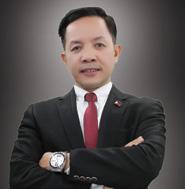
Technology Academy Manager, Microsoft Learning Consultant, Global Trainer, Vietnam
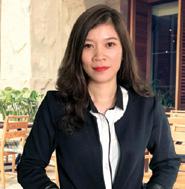
Dr. Manoj Varghese, Ph.D
Senior Director - Global Partnerships, Advisory & Consulting - Connecta®, Adjunct Faculty - Assumption University, Former Global Director Technology & Risk Management - GEMS Education, Former CIO - Athena Education.


CHIEF OF EDUCATION
INTER-AMERICAN DEVELOPMENT BANK
LEADING EFFORTS TOWARDS STRENGTHENING THE LEARNING ECOSYSTEMS FOR 21ST-CENTURY EDUCATION
CREATING AN IMMERSIVE LEARNING EXPERIENCE WITH AUGMENTED REALITY
Michalitsa Papasotiriou, Head of Educational Partnerships, Technokids Greece

58
28
MENTOR’S OPINION
LEADING A SUCCESSFUL CULTURAL TRANSFORMATION RESULTING IN OUTSTANDING STUDENT PERFORMANCE
Steven Giles, Principal, Raffles International School, Dubai

ADMIN PERSPECTIVE
36 CULTIVATING STUDENT OUTCOMES FOCUSED LEARNING
CULTURES IN SCHOOLS: A GUIDE FOR EDUCATIONAL LEADERS
Dr. Anthony Hamlet, Superintendent of Schools

HOW TO USE APPLIED NEUROSCIENCE TO ENHANCE RELATIONSHIPS AND CREATE SUSTAINABLE SOCIETIES




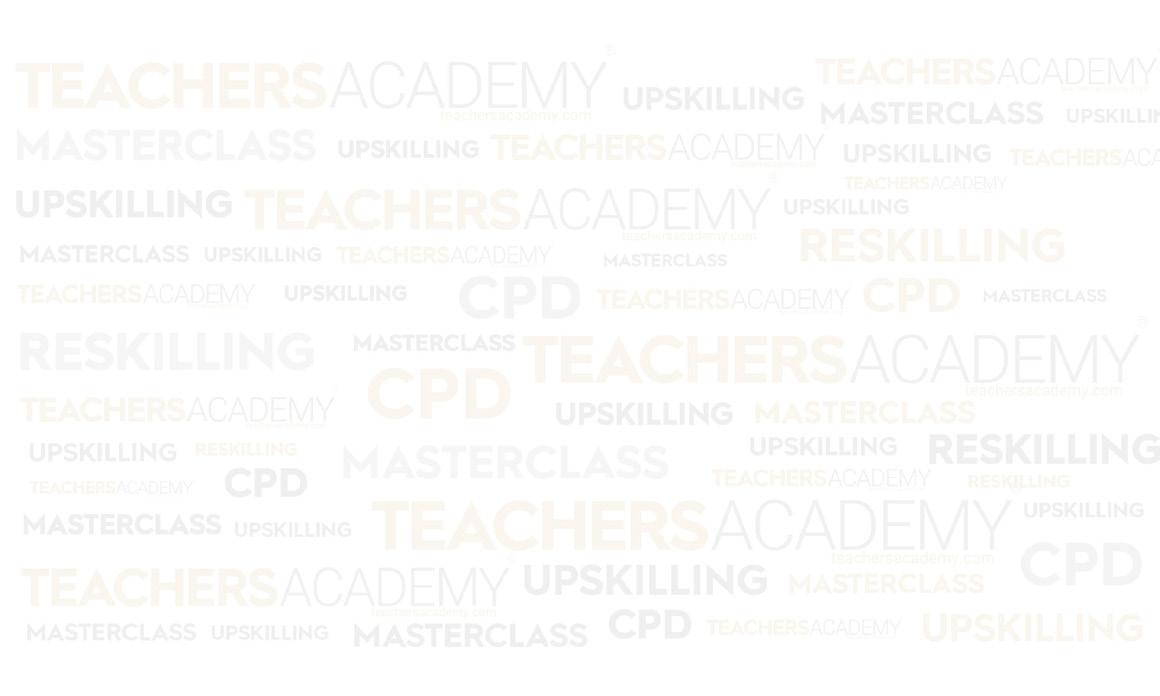



Mercedes Mateo Díaz is Education Division Chief at the IDB Group, where she leads an ambitious initiative to rethink education and strengthen the learning ecosystems to equip citizens with 21st-century skills. She coordinates the research, design and execution of innovative education projects. Her work covers different areas of international development and social policy, with a strong emphasis on inequality. Recently, in an exclusive interview with K12 Digest, Mercedes shared her insights on the challenges faced by Latin America and Caribbean communities when it comes to higher education, her professional journey, current roles and responsibilities as the Chief of Education at InterAmerican Development Bank, pearls of wisdom, and much more. The following excerpts are taken from the interview.
CHIEF OF EDUCATION INTER-AMERICAN DEVELOPMENT BANK
Can you shed light on some of the challenges faced by Latin America and Caribbean communities when it comes to higher education?

Let me start with the macro. Over the past 30 years, productivity growth in the region has been slow, with an average annual rate of only 1%. There is also a significant skills mismatch between supply and demand in the labor market. To improve productivity Latin American and Caribbean countries need to invest more in human capital development.
Now, the story of education in the region in recent decades presents a mixed picture. On the positive side, compared to their parents’ generation, more children pursue higher education, and they accumulate more skills than their grandparents’ generation. This trend reflects increasing access and opportunities for education in the region. However, today’s generations are still slightly below the skill level of the average grandparent in OECD countries. While schools do add value when we compare the skills of students who stay in school versus those who drop out, it is still not sufficient considering global trends.
In terms of access to higher education, gross enrollment rates have risen from 19% in 1999 to 52% in 2019, and access to higher education has improved for lower income quintiles and women across most countries. However, these rates still fall behind OECD countries, where enrollment in postsecondary education
reached 75% in 2019. The COVID-19 pandemic had a negative impact on enrollment, particularly in countries where a significant percentage of education is provided by private institutions and access to grants and student loans is limited. Access is also highly inequal: despite a significant expansion, the proportion of students from the highest income quintile is three times higher than those from the lowest quintile. And we know that, in terms of employment, higher education truly makes a difference. There are significant wage premiums for individuals with higher education, even after controlling for socioeconomic and demographic characteristics.
An interesting trend emerged during the pandemic, with an increase in demand for online courses alongside a decrease in enrollment in traditional programs. The region has also witnessed the emergence of new universities, both public and private, leading to an increase in the supply and diversity of higher education institutions. Approximately 2,300 new higher education institutions and 30,000 new programs have been created.
Additionally, technical and vocational education and training (TVET) enrollment has also seen an increase, representing around 35% of enrollment in countries like Colombia and Peru, and 45% in Chile.
Women remain underrepresented in Science, Technology, Engineering, and Mathematics (STEM) fields, despite efforts across the region to increase their participation. On average, only 14% of university degrees in the region are in STEM careers, compared to 17-19% in other regions. And less than 10% of STEM graduates are women.
Quality and relevance are also critical issues in postsecondary education. A recent study conducted by the IDB in collaboration with IDB Lab and HolonIQ highlights that while one-third of higher education institutions in the region recognize the importance of digital learning for the future, many lack the necessary digital maturity to make a successful transition. Insufficient digital skills among teachers and administrative staff hinder the effective utilization of technological tools and platforms.
Women remain underrepresented in Science, Technology, Engineering, and Mathematics (STEM) fields, despite efforts across the region to increase their participation

How is the Inter-American Development Bank contributing to support the development of children and youth from Latin America and Caribbean communities to make them future ready?
At the Inter-American Development Bank (IDB) we believe that we have an opportunity to accelerate development by changing our lens for viewing the region, from looking beyond the daunting problems we face, to repositioning the region as a potential solution to shared global challenges. This is why we are actively working to support the development of children and youth in Latin America and the Caribbean to make them future-ready.
To achieve that vision, we are increasing our investments in education to support governments through: financial resources (this year we will triple our lending in the sector); technical assistance by producing cutting edge knowledge to help countries to implement evidence based policies and programs; and with strong partnerships with donors and private sector that will allow us this year to mobilize a record number of grant resources that we pair with our loans. This strategy allows us to multiply the effect of every dollar borrowing countries use from the IDB capital.
Now, in terms of priorities, we know that it is not enough to recover students’ trajectories and learning from the pandemic: countries need to solve structural issues. We also know that to improve access to higher education we need to start downstream and transform education systems from the early years. This is why we support education systems and
students from the beginning by improving the quality and access through the life cycle: from early childhood, primary and secondary education, to TVET and higher education.
We are also promoting innovation and digital transformation. This is why we are supporting countries in the region to incorporate the use of technology and artificial intelligence to enhance educational processes and learning. Here are some examples:
Early Warning Systems: We are using machine learning to develop early warning systems that help reduce educational exclusion. These systems detect at the beginning of the school year which students are at risk of disengagement, allowing timely interventions by the education system.
Accelerated and Personalized Learning Platforms: We have developed platforms that utilize gamification and adaptive technology to support teachers and enable students to learn at their own pace. This technology addresses the specific educational needs of students, such as those with dyslexia, and promotes the learning of indigenous languages like Quechua through conversational bots.
Learning Assessment: We have implemented solutions that use artificial intelligence to assess reading fluency and accuracy. Traditional assessments can be costly due to the need for dedicated evaluators. By leveraging AI to process students’ reading, we can eliminate that application cost.
Centralized Teacher and Student Assignment: We have introduced centralized systems to optimize school selection and student placement. These systems provide personalized information on risks and
alternative school options. By utilizing machine learning simulations, we can predict which schools will face high demand and identify candidates at risk of not securing a spot. We send alerts to candidates at risk, offering recommendations for schools where they have a better chance of obtaining a vacancy, allowing them to modify their application accordingly.
Addressing inequality is at the center of our work. We support initiatives that target the most vulnerable and hard to reach communities, including indigenous populations, rural areas, and low-income households. We truly believe that to improve opportunities and social mobility for all children and youth in the region, countries need to reduce educational disparities.
Mercedes, please brief us about your background: education and career. Education has always held a special place in my life. I come from a small city in Spain. As a child, I had a deep intrinsic motivation to study: I truly believed that with education I will have the power to do anything. In that journey, the European Union (EU) was my passport to the future as it provided me with countless opportunities. I benefited from an array of scholarships and study programs, such as Erasmus, Training and Mobility of Researchers, Jean Monet Fellowship, Marie Curie Postdoctoral Fellowship, and more. I often refer to myself as a “European product”: I had the privilege to receive education in Belgium, Sweden, Italy, the UK, France, Germany, the Netherlands, as well as my home country, Spain. Also, through the EU I could undertake part of my training in the United States.
I initially embarked on my career in academia with a genuine love for research. At that time, I thought I would remain in that field. Education became my obsession through my work on equality. While nobody can choose their place of birth, societies have a responsibility to ensure that everyone has equal opportunities to succeed by providing access to quality education for all. It is unacceptable today that when a disadvantaged child thinks of her future, all she sees is the story of her mother reproduced, with limited chances to move up the social ladder. This needs to change.
My life took an unexpected turn almost 20 years ago, when I joined the IDB. Working for a development organization was a mindblowing experience that ignited my true passion. It has been transformative. Every day, I have the opportunity to learn something new, which is incredibly enriching. But what makes this work truly special is the ability to combine knowledge with action, which is a rare and remarkable combination. It’s a balance that keeps me motivated and connected to the real-world challenges we strive to address.
As the Chief of Education at the Inter-American Development Bank, my role is far from being an individual effort. It’s all about teamwork and collaboration. I work closely with a talented team of over 60 people who are dedicated to supporting education policies and initiatives in the region. Our team manages a robust portfolio of over $2
billion dollars in investments across the different countries. This substantial financial commitment underscores the Bank’s dedication and commitment to advancing education outcomes and opportunities in the region. Our aim is to ensure that every dollar invested has a tangible
impact on education, empowering individuals and creating positive change.
In this role, strategic leadership is crucial. I have a responsibility to provide guidance and direction for the Bank’s education initiatives and programs. It’s about developing a comprehensive

Addressing inequality is at the center of our work. We support initiatives that target the most vulnerable and hard to reach communities, including indigenous populations, rural areas, and low-income households
education strategy that serves the people and countries in the region and aligns with the Bank’s overall goals and objectives to make every dollar count. But I want to emphasize that this is a collective effort. It’s not just about individuals but the result of collaborative discussions and input from our team of experts.

Policy development is another essential aspect of our responsibilities. We play a pivotal role in contributing to shape the agenda and improve education policies and programs in the region. This requires extensive research, analysis, and evaluation to identify critical challenges and opportunities in education. Our aim is to develop evidence-based policies and recommendations that can truly drive positive change.
Development effectiveness is central to our work. To make sure projects achieve their results and transform people’s lives, we need to focus on design, execution, and evaluation. We need a combination between strong knowledge sharing, capacity building and project management skills to oversee the design, implementation, and monitoring of projects supported by the Bank.
Partnerships and collaboration are also at the core of what we do. We actively foster relationships with governments, other international organizations, civil society, private sector, and different stakeholders. By leveraging these partnerships, we can pool resources, share knowledge, and promote effective education practices throughout the region and beyond. Building strong relationships with donors, identifying funding opportunities, and advocating for increased investments in education are all part of the collaborative effort to make a lasting impact.
You lead a large team of highly talented professionals working together to rethink education and strengthen the learning ecosystems of the Latin American and Caribbean region. How would you describe your leadership style? And what do you do to motivate and inspire them?
At the center of any human relation is trust. You need to trust your team and be trusted by them. This is why I am quite horizontal. Leading a team of highly talented professionals requires a big dose of humility and a deep appreciation for their contributions. I tend to focus on the big picture to create a shared narrative that brings cohesion to the work that we do as a team. Then people have a high
level of autonomy. I believe that listening is fundamental to effective leadership. I highly value the expertise of each member of my team and want their insights. I actively listen to their advice and perspectives, integrating their knowledge and ideas into our decisionmaking process. I believe that the best solutions emerge through collaboration and harnessing the diverse expertise and experience within the team.
For people to trust you, they need to perceive that decisions are fair. This is why fairness is also one of my guiding principles. When making decisions, I strive to ensure that everyone understands the rationale behind them. While not everyone may agree with the outcomes or resource allocations, it is important that they
I embrace challenges and encourage my team to approach them with determination, understanding that progress often requires stepping out of our comfort zones
perceive a sense of fairness in the decisionmaking process. Transparency and clear communication play a key role in achieving this.
I would say courage is also part of my leadership style. I believe that taking risks and making difficult decisions are essential for individual and collective growth. I embrace challenges and encourage my team to approach them with determination, understanding that progress often requires stepping out of our comfort zones.
It is also extremely important to nurture the growth of every individual in the team. I believe in creating a psychologically safe space where individuals can grow and feel comfortable sharing their weaknesses and challenges. This openness allows us to support each other and foster a collaborative environment where everyone’s input is valued.
Taking care of the well-being of the people I work with is also a top priority. I strive to create an environment where they can thrive and grow both personally and professionally. I am not always good at it, by I believe it is important to demonstrate the importance of work-life balance in your own life as leader, to inspire and support other people in finding their own equilibrium.

When I think about role models, I gravitate towards individuals who embody a certain balance between their personal and public lives. People who combine exceptional professional abilities, while upholding strong values, unwavering commitment, and a clear sense of purpose. And when you take all of that into account, you realize that finding those examples is extremely challenging.
So, let me give you four names of people who exhibit remarkable qualities that are really appealing to me. Joan of Arc immediately comes to my mind for her intelligence, tactical prowess, and bravery in breaking stereotypes. She displayed incredible courage, leading armies and challenging societal norms. Her story serves as a powerful reminder of the importance of pushing boundaries and defying limitations.
Nelson Mandela is another leader who exemplifies resilience and the ability to forgive. Despite enduring years of imprisonment and facing tremendous adversity, he managed to reconcile a divided nation and build peace from a foundation of hatred. Mandela’s capacity for forgiveness and his unwavering commitment to unity are truly inspiring.
I measure success by the ability to transform the world around us, and that requires the collective efforts of many people
I also like very much Winston Churchill’s gift with words and his ability to inspire and mobilize people through his speeches. His eloquence and fearlessness during times of crisis is admirable as well as its capacity to ignite unwavering determination.
I want to end the list with Angela Merkel. She has shown during her years in power incredible crisis management abilities. She has demonstrated exceptional skills in navigating complex challenges with determination. She has also done great contributions to strengthening the European Union. Merkel’s steadfast dedication to a unified Europe and her commitment to cooperation and stability resonate deeply with me.
As you can see, courage is a common thread among all my role models. Whether it’s
Joan of Arc’s defiance of societal norms, Nelson Mandela’s resilience in the face of adversity, Winston Churchill’s boldness during challenging times, or Angela Merkel’s unwavering vision, courage is a quality that I highly value in leaders.
What are some of your greatest achievements in your career till date? What makes them special?
I want to highlight two achievements that are not specific successes, but rather the underlying factors that enable great things to happen. The first achievement I’m proud of is building a global network of like-minded individuals who share the determination to bring about positive change. I measure success by the ability to

transform the world around us, and that requires the collective efforts of many people.
The second significant achievement is recognizing the inseparability of personal life and professional career. It took me sometime. They are intertwined and have a profound influence on shaping our identities. As a mother, I have experienced firsthand how being a parent impacts my professional growth. It’s not just about how my career affects my role as a mother, but also how being a mother shapes my approach to work. Making it all work has been one of my most important challenge and accomplishment. Balancing the responsibilities of being a present mom while trying to excel in a demanding job hasn’t been easy. It has tested me in ways I never anticipated. It is a precarious equilibrium: when you think you have it all under control, it falls apart and you need to restart.
Let’s be honest, we still have a long way to go as a society to achieve true equality. The expectations and standards placed on men and women differ significantly. However, I firmly believe that everyone of us as individuals have a social responsibility to contribute to a more equal society for future generations. We need to challenge expectations and norms. People

The beauty of the education field is its constant evolution and the endless opportunities for creativity and innovation
should not have to choose between being a committed parent and a dedicated professional. They should not have to sacrifice their dreams for the sake of their family or vice versa.
By defying these expectations and working towards a more balanced and inclusive society, we can create a world where individuals can thrive both personally and professionally, pursuing their dreams while nurturing their personal and family life.
One of the biggest lessons I’ve learned is the importance of humility. When you’re leading a team of incredibly talented individuals, it’s crucial to stay grounded and recognize that you don’t have all the answers. It takes a big dose of humility to acknowledge that and value the expertise of each team member.
Another lesson that stands out for me is the power of human connection. It’s not enough to have a group of skilled individuals working together. They need to feel connected, like a real team, with a healthy social dynamic. As a leader, I’ve seen firsthand how fostering those connections can unlock the team’s full potential.
I’ve also come to understand the existence of double standards. It’s frustrating to see that certain behaviors or qualities that are celebrated in male leaders are sometimes criticized or seen differently when exhibited by women leaders. We still have work to do in achieving true equality and recognizing the value that diverse perspectives bring to the table.
Leading by example is something I strongly believe in. If I want my team to find a healthy balance between their personal and work lives, I
have to demonstrate that I prioritize that balance too. It’s about practicing what I preach and creating an environment where everyone feels supported in maintaining their well-being.
Where do you see yourself in the next five years?
I’ve never been one to meticulously plan out my life. What I can say for certain is that I absolutely love my job and have a deep passion for education. It’s a field that truly drives me and gets me excited to jump out of bed in the morning. I can’t see myself straying too far from that field in the future. It’s where I feel I can make a tangible difference. There’s something incredibly fulfilling about knowing that the work we do has the potential to improve the lives of others and contribute to a more equitable world.
However, I’ve always had a bit of an entrepreneurial spirit, so who knows where life will lead me. The beauty of the education field is its constant evolution and the endless opportunities for creativity and innovation. I’m always ready to embrace new challenges, learn from others, and expand my own skills to hopefully have a meaningful impact on future generations.
What advice would you give to someone who is considering a career in education?
If you’re considering a career in education (this could actually apply to any other field), you need to have a genuine passion for it. Without that passion, it’s difficult to make a meaningful impact. Once you’ve chosen the path of education, never forget the reason why you’re there. Education is
the most powerful tool to reduce inequality and improve social mobility. And this is what makes it different from other fields.
Back in 1999, Nancy Birdsall, founding President of the Center for Global Development (CGD), and former Executive Vice-President of the InterAmerican Development Bank, a thought leader in the development community and someone I truly admire, compared education to an asset, like land and wealth, but with unique qualities: “It is a special asset in two respects. First, once acquired, it cannot be stolen or sold -- it cannot be alienated from its owner. Second, as the amount of education increases, other assets such as land and physical capital decline as a proportion of total wealth in an economy; since the ownership of these latter assets is usually more concentrated than that of education, the overall concentration of all assets declines.” This paragraph perfectly captures the essence of education in terms of its potential to leveling the playing field for those who have no other assets. For many children and youth, access to high-quality education is their only chance at a better future. It places a great responsibility on us to fight for that access in every way we can.
Whether you’re an educator or work in the field of education, it’s important to never lose sight of the transformative power education holds. We have a responsibility to fight for equitable access to education, ensuring that every child and young person can thrive and succeed.
Whether you’re an educator or work in the field of education, it’s important to never lose sight of the transformative power education holds

How has the K12 education landscape transformed over the last five years and where is it heading now?
Of course, the obvious answer is to reflect on the global pandemic but to me it is more than that speedbump that was given to us all in 2020. Personally, K12 education is about not wasting an hour, minute or even second of this incredible opportunity we all have to be the very best we can be. The opportunities
that young people have today with technology and innovation are mind-blowing however we must not lose sight of the core attributes that make up a lifelong learner. Reading a book from a library, turning the page, grasping a pencil and shaping your letters in readiness of attaining your pen license, writing your formal examinations. Working as a team, making friends, falling out, making friends again. Allowing others to be resilient,
The opportunities that young people have today with technology and innovation are mind-blowing however we must not lose sight of the core attributes that make up a lifelong learner
Steve Giles has an extensive history in school leadership having been part of Senior Leadership Teams since 2008 improving schools in inspection grades in every school he has worked in, including working in an ‘Outstanding Ofsted rated’ school in the United Kingdom. Steve’s innovative and dynamic leadership played an integral part in his school being rated in the top 12 schools (out of over 4000) for contextual value added for two years in row in England.
Steve has consulted in a number of schools in England on aspects of school improvement and raising standards. He has had an extensive and successful career in the United Kingdom and has now spent six years in the United Arab Emirates. In his role as principal, he is focused on Raffles International School becoming one of the top UK curriculum schools in Dubai and his students achieving the very highest results possible.
In an exclusive interview with K12 Digest, Steve Giles talks about the transformation of the K12 education landscape over the last 5 years, the most challenging aspect encountered by him while running an international school, what sets Raffles International School apart from others, and a lot more. Following are the excerpts from the interview.

succeed, thrive and celebrating their success while they celebrate yours. In 5 years’ time, I see a place for the core things in any school to still be the same but to embrace those opportunities that come along with both hands.
In your opinion, how does holistic education prepare students for today’s ever-changing world?
Holistic education in my view is ‘as’ if not ‘more’ important than academic qualifications. Today more than ever we witness conflict, a disparity of economic affluence, and observe neighbours struggle. Yet we see hope, support and understanding. It is important that from a very young age we understand the wider holistic view of the world. I have a statement in my school vision which states, ‘to understand that we are all different and yet the same’. For me this is pertinent to holistic education. Yes, pedagogy and academia will always be at the forefront of formal examinations and assessments but understanding the wider issues of ‘how’ ‘why’ ‘what’ and ‘where’ are key to progress of the world as a whole. How can one person make a difference by taking a small step in a different direction.
Mr. Giles, please brief us about your background: education and career. I completed a bachelor’s in education degree with Honours (B. Ed) and a master’s in education (M. Ed) focusing on professional development and leadership through Exeter University. I achieved a distinction for my work around the recognition and

Try different things, in different ways.
There was no point at all in repeating past actions and expect a different result
motivation of students at year 7, 8 and 9 in my 30,000-word thesis. I also achieved the National Professional Qualification for Headship (NPQH).
I have an extensive history in school leadership having been part of Senior Leadership Teams since 2008 improving schools in inspection grades in every school I have worked in, including working in an ‘Outstanding Ofsted rated’ school in the United Kingdom. I have also consulted a number of schools in England on aspects of school improvement and raising standards. In my current role as the principal, my focus is centered on Raffles International School becoming one of the top UK curriculum schools in Dubai and my students achieving the very highest results possible. I believe in an inclusive school approach to learning where students of all abilities can achieve results of which they can be proud of.
What sets Raffles International School a notch above its peers?
Raffles International School is more than a school, it is an extended family. Our parent community say that we (the staff) are their child’s fathers and mothers when they drop them off each day. They tell me this, as I greet them all at the entrance to the school in their cars with a morning message on my white board! They have complete trust in what we are trying to achieve and support us fully in our efforts and application. We talk to parents face to face and on the phone rather than write emails. Every six months we send an official Net Promoter Score (NPS) survey to ascertain parental feedback and have overriding scores of over 60 which
would rate us as one of the highest performing schools in the world with regard to parental feedback. The schools inclusive and growth mindset approach to every challenge is unique and infectious to all who join and attend.
As the Principal, what is the most challenging aspect of running an international school?
I would prefer to think of a challenge as an opportunity. For me trying to do the right thing every day in every way is a challenge yet an opportunity. So, a challenge could be to see so many non-native English speakers join our English-speaking school, yet the opportunity is to see them progress at such a rapid rate through outstanding teaching and learning not just from our wonderful teachers but our wonderful support staff and most importantly our wonderful student community. A nervous child without a word of English will be buddied with a child from the same nationality and mother tongue. We ensure they have that safe friend to be able to express themselves and explain if they feel anxious or nervous. The friend grows their own confidence to be able to watch their new peer grow not only in their linguistic abilities but their self esteem and confidence. Yes, it is a challenge, but it is also an opportunity, and what an opportunity that is to change lives.
How would you describe your leadership style?
Extremely positive. I look at every day as a new day to progress and learn. My default answer is always ‘yes’. This can get me into trouble! I believe my positivity is infectious
to those around me, but I think you would need to speak to them as to whether it is inspiring or annoying! I am proud that many teachers and staff who I have worked with in the past often contact me to see if there are opportunities at my current school. I take this as a positive endorsement that I must be doing something right. I am a proud leader of the progress of others. I do not crave the limelight and always acknowledge the achievements of my team both leadership and extended.
I have been extremely fortunate in my life to have a number of role models who I look up to.
As one of six brothers, I admire my mother and father (now deceased) beyond words.
My admiration for them having two children of my own has only increased this. How did they do it? We laugh that my father was trying to create his own football team.
Professionally, I was fortunate to work under the outstanding leadership of Mrs. Carol

Hannaford in my school in Plymouth, England for 16 years. The embodiment of a strong female role model. Although an absolute taskmaster, Carol never ever accepted anything other than your very best, but always maintained that your best was good enough. I would often go into her office and say ‘Carol, I’ve got an idea’. She would always hear me out and give me time. The most valuable thing in the world, time. It is now that I follow this ethos. I give everyone time and listen to every idea. My default answer is yes wherever possible. Carol surrounded herself with outstanding leaders, people whom she could trust. There is no point having a leadership team that just agree with everything you say. It is important for them to have a voice and to be listened to, that’s how we all learn and develop. I have taken this model from her and replicated it with my leadership teams.
I have many achievements which I am proud of, but they are all about other people. A couple that

I have an extensive history in school leadership having been part of Senior Leadership Teams since 2008 improving schools in inspection grades in every school I have worked in, including working in an ‘Outstanding Ofsted rated’ school in the United Kingdom
stand out are I accepted a boy aged 15 into my school around 2006 when he had been excluded by two other schools and then could not get into any school in the area. I accepted him as a personal mission to give him a chance and looked out for him and checked in on his progress every day. It was a hard task to keep him on the right pathway but on GCSE results day when his mother saw what he had achieved the words she said to me will stay with me forever. “You took a chance when others would not, you risked a lot for someone you did not know. He now has a future and this is down to you. Thank you” Of course it was absolutely not down to me, it was down to the incredible teachers who were teaching him. I was just the mentor and safe space for the days that were tough for him.
The second example is of a teacher who again had failed his final practice in my school and was about to quit the profession. I felt he had something special inside of him, he cared so much about the students in his classroom, his heart was full of passion, he just didn’t and couldn’t channel it into the art of teaching. We went for a coffee out of school. We talked about everything but education. We talked about his dreams as a boy, his dreams as an adult, his family, his dog, his one, three and five year plan. What music he liked, even his favourite place to relax. We laughed and joked and decided that all was not lost. It was time to get back in the classroom and start over. Try different things, in different ways. There was no point at all in repeating past actions and expect a different result. We even had a
code word in a lesson if it was felt that the lesson was getting away from the focus, to regroup and get back to the plan. The word was ‘September’. The young man (not so young now!) is now on the SLT in his school.
Where do
see
International School in the next five years?
I would hopefully like to firstly still be at the school! I see Raffles International School as a school with unlimited potential. The students are incredible and are a credit to their families. The staff are some of the finest I have ever had the pleasure of leading, they are like sponges, receptive and excited to embrace new ideas and challenges. The school should not be judged just on an inspection rating or academic achievement of external examinations, however, far too often these are the barometers that are celebrated. So where would I like to see the school in 5 years.
A vibrant and dynamic student and staff community who are resilient, caring, tolerant and driven. A community that most of all have integrity, respect and understanding of all nationalities, abilities and specific needs. A community who achieves their very best for their ability whatever that may be.
What is the one thing you would recommend to someone who wishes to pursue a career in teaching?
Teaching is the best job in the world. You never forget your favourite teacher. Make that favourite teacher you.

Dr. Anthony Hamlet is an experienced educator with over 28 years in the field. He has worked in affluent and impoverished schools & districts and has a proven track record of turning around underperforming schools and school districts. Dr. Hamlet has served in various roles, including case manager, teacher, principal, and district administrator, earning five principal of the year awards, and being a two-time finalist for the Green Garner “Urban Superintendent of the Year” Award. As superintendent of Pittsburgh Public Schools, he made ground-breaking changes that helped students do better in school and led to a huge drop in the number of students who were suspended. Dr. Hamlet holds degrees from the University of Miami and Nova Southeastern University and has completed continuing education programs at Harvard University and Howard University. Before his educational career, as a former NFL player, he played for the Miami Hurricanes and was part of three national championship teams.
Creating a student outcomes-focused learning culture is essential to promoting student success and continuous improvement in schools. As educational leaders, it is our responsibility to cultivate an environment that prioritizes high expectations, equity, access, and adequacy to ensure all students have the support they need to achieve their full potential. In this article, we will explore the critical elements of a
student outcomes-focused learning culture, the role of educational leaders in nurturing it, and the tools and strategies available to create such an environment.
One of the critical elements of a student outcomes-focused learning culture is a set of core beliefs in ability and achievement, efficacy and effort, and power and control. These beliefs manifest in structures within the physical environment, group relationships,

Educational leaders should advocate for the use of authentic assessments that measure students’ skills, knowledge, and growth in meaningful and relevant ways
policies, and procedures. The learning climate of a school is essential to developing a student outcomes-focused culture. A positive learning climate, characterized by attitudes, behaviors, and practices that promote student success, is key. Educational leaders must create an environment that emphasizes the importance
equity, access, and adequacy. A “backward design” approach is essential, envisioning desired student outcomes and designing structures, policies, and practices that align with these goals. Leaders must establish clear expectations for performance and behavior, emphasizing the importance of effort and achievement. Fostering a collaborative environment, promoting equity, access, and adequacy, and empowering teachers and staff are also essential.
Effective communication is vital for fostering a student outcomes-focused culture. Leaders must communicate expectations and goals to all stakeholders, ensuring everyone understands their roles and responsibilities in achieving these objectives. Collaboration and teamwork among teachers, administrators, and support staff are also essential for ensuring a shared commitment to improving student outcomes. Leaders must invest in ongoing professional development to maintain a focus on student outcomes and continuously improve instructional practices.
The classic Rosenthal study demonstrated the power of beliefs in influencing student success. Leaders must foster positive beliefs about students’ abilities and potential to impact their performance and achievement positively. Encouraging a growth mindset among educators and students and promoting culturally responsive teaching practices are critical components of this effort.
of high expectations, equity, access, and adequacy, promoting a culture of continuous improvement and student success.
Leadership plays a critical role in nurturing a culture of continuous improvement and school success. They must prioritize high standards, student-centered approaches, and focus on
Structures that embody beliefs must be identified and analyzed to create new experiences that lead to changes in assumptions and the development of new beliefs. Implementing new structures, such as academic interventions, socialemotional learning programs, and wraparound services, can help address the diverse needs of
Continuous assessment and adaptation of policies and practices are critical to promote continuous improvement and achieve desired student outcomes
students and foster a student outcomes-focused learning culture. Educational leaders must also prioritize instructional models that align with their vision and goals for student outcomes. This may involve adopting project-based learning, inquiry-based learning, or other student-centered approaches that promote critical thinking, problem-solving, and collaboration.
Assessment practices used in a school must align with the desired student outcomes. Educational leaders should advocate for the use of authentic assessments that measure students’ skills, knowledge, and growth in meaningful and relevant ways. Establishing comprehensive support systems, such as academic interventions, social-emotional learning programs, and wraparound services, can help address the diverse needs of students and foster a student outcomesfocused learning culture.
Creating a student outcomes-focused learning culture is a challenging task for educational leaders. However, with persistence, dedication, and the implementation of effective leadership strategies, leaders can create a nurturing environment that supports improvement, high expectations, and the well-being of students. Leaders must have a deep understanding of their school’s culture, values, and beliefs to implement changes successfully. Empowering teachers and staff by providing ample support for professional development, shared decisionmaking, and distributed leadership is critical to creating a sense of ownership and responsibility among educators.
Continuously assessing and adapting policies and practices is critical to promote continuous improvement and achieve desired student outcomes. Leaders must regularly evaluate the effectiveness of structures, policies, and practices,
making adjustments as necessary to ensure they align with the desired student outcomes.
One strategy for continuous improvement is the use of data-driven decision-making. Educational leaders can use data to identify areas for improvement, set goals, and track progress towards achieving them. This approach enables leaders to make informed decisions and evaluate the effectiveness of policies and practices in real-time.
Another essential strategy for continuous improvement is teacher collaboration. Teachers can collaborate to share best practices, analyze student data, and develop new approaches to instruction. By working together, teachers can support one another and continuously improve their teaching practices to benefit their students.
In conclusion, creating a student outcomesfocused learning culture is a complex and challenging task for educational leaders. However, by prioritizing high expectations, equity, access, and adequacy, leaders can foster a culture of continuous improvement and student success. The critical elements of this culture include core beliefs in ability and achievement, efficacy and effort, and power and control. Leaders must employ effective leadership strategies such as fostering a collaborative environment, promoting equity, access, and adequacy, and empowering teachers and staff. Continuous assessment and adaptation of policies and practices are also critical to promote continuous improvement and achieve desired student outcomes. By implementing these strategies and working tirelessly to support their students, educational leaders can create a nurturing environment that supports improvement, high expectations, and the well-being of students.
Amath student sits down in class, pulls out a pencil, and begins a math exam. On every question, one of two things will happen. The student will get the correct answer. Or they will get an incorrect answer. To improve our score, we must reduce the number of incorrect answers. But how?
In 20 years of math tutoring, I’ve seen two types of math students. The top 10% and the other 90%. If grades separate the top 10% from the other 90%, what’s the difference? The top 10% think differently. To break down the top 10% thinking, we start with the three ways to get a math problem wrong.
1) The student had no clue how to start a problem.
2) The student knew the type of problem but forgot crucial formulas and shortcuts.
Don Sevcik is the Creator of the fastest math tutor on the planet, MathCelebrity. He’s a best-selling author of 5 books and also consults on SEO and mental models.
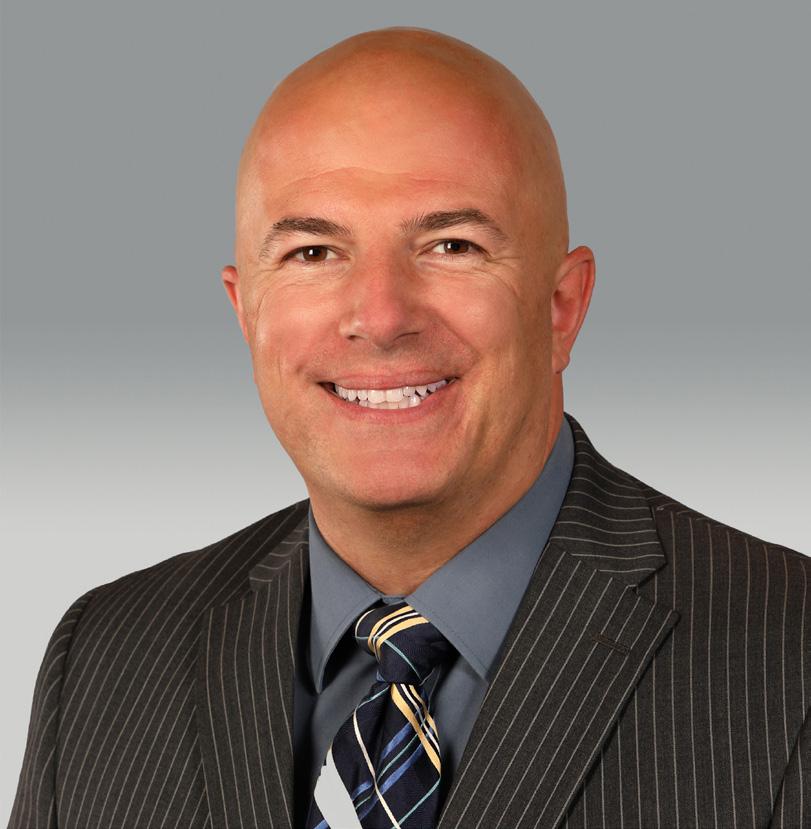
3) The students knew the type of problem and all the formulas but made a silly mistake in their work.
To reduce the incorrect answers we get, let’s explore how to solve these three situations.
The top 10% excel by using pattern recognition. When they see a new math question, their brain scans for patterns. Consider these examples:
● 98 mod 2
● 98 % 2

● What is the remainder of 98 divided by 2?
If you’re familiar with modulus problems, you know these 3 questions mean the same thing. Which means they have the same answer. And it all comes down to patterns. The abbreviation mod means modulus. The percent sign between two numbers comes from the programming world. It also means modulus or remainder when 98 is divided by 2. Question 3 is self-explanatory.
Pattern recognition helps you respond faster to math problems. Once you have the pattern, you can drill down to the steps. The steps lead you to the answer. If you can’t recognize what type of problem you’re looking at, you can’t find the right steps to finish the problem.
How do you develop pattern recognition? Start by reading problems in the math book. Look for patterns or common phrases which give clues to the type of problem it is. Also, cut extraneous information. Here’s an example:
John Smith lived in Canada. His trailer can hold 500 pounds. He has a box of watermelons which each weigh 10 pounds. How many watermelons can the trailer hold?
If you’ve fine-tuned your pattern recognition skills, you’ll notice two things. First, the trailer weight capacity. Second, the weight of
watermelons. John Smith living in Canada means nothing. So you cross that sentence out of your mind. And the important parts of the problem are left over. Once you have strong pattern recognition skills, the next skill reveals itself.
A pattern should trigger two things in your head: formulas and shortcuts. Formulas come from words and symbols in the pattern. In the example earlier of 98 mod 2, we have 2 steps:
1) Divide 98 by 2
2) Get the remainder (modulus)
Easy enough. But the top 10% of students take it a step further. 98 is even. 2 is even.
If you know about even numbers, you know any even divides an even with no remainder. It doesn’t matter how big or small the even numbers are.
You’ll find another classic example of formulas and shortcuts in two-step equations. Consider the equation 2x - 9 = 41. The average student adds 9 to each side, simplifies. Then they divide each side by 2. The top 10% know a shortcut for any two-step equation:
x = (c - b)/a
For 2x - 9 = 41, we have a = 2, b = -9, c = 41. Using the shortcut, we have:
x = (41 - -9)/2 = 50/2 = 25
This one shortcut shaves 5-10 seconds off the time it takes to solve the problem. Find enough
Taking away bad behaviors is so much easier than adding good new ones. Think of it as addition by subtraction. Take away the bad and the good shines through
shortcuts, and you give yourself back more time on an exam. More time gives you a chance to fix the third type of mistake on math problems…
In Simon Rano’s book, Extraordinary Tennis Ordinary Players, he talks about the difference between professional and amateur players. Professionals win points whereas amateurs lose them. What do we mean by this? Amateurs make lots of unforced errors. Unforced errors happen when you make a correctable mistake with no outside cause. Unforced tennis errors include hitting the ball out of bounds or into the next. Professional players set up situations where amateurs give away points.
In essence, the professional avoids losing points. And they do this by avoiding unforced errors. Amateurs give away points to pros by making unforced errors.
Warren Buffett’s partner, Charlie Munger said it best. “All I want to know is where I’m going to die so I’ll never go there.” In math class and life, we can gain a large advantage
through inversion. Inversion is a mental model which forces you to think backwards. For math class, think about what will hurt your progress, and then eliminate it.
For instance, how would I be a poor math student? I’d get less sleep for poor cognitive function. I wouldn’t read the syllabus, so I’d miss out on foreknowledge. I’d eat a poor diet to hurt my brain power. And I wouldn’t check my work to avoid silly, unforced errors. You see, taking away bad behaviors is so much easier than adding good new ones. Think of it as addition by subtraction. Take away the bad and the good shines through.
To break through to the top 10% of math students, you must develop these 3 skills. First, master pattern recognition. Use patterns to identify the type of problem. Second, the pattern comes with formulas and steps. Build relationships between patterns and formulas. Use shortcuts when you can. And last, avoid silly mistakes. You can’t win when you take yourself out of the game.
Pattern recognition helps you respond faster to math problems. Once you have the pattern, you can drill down to the steps
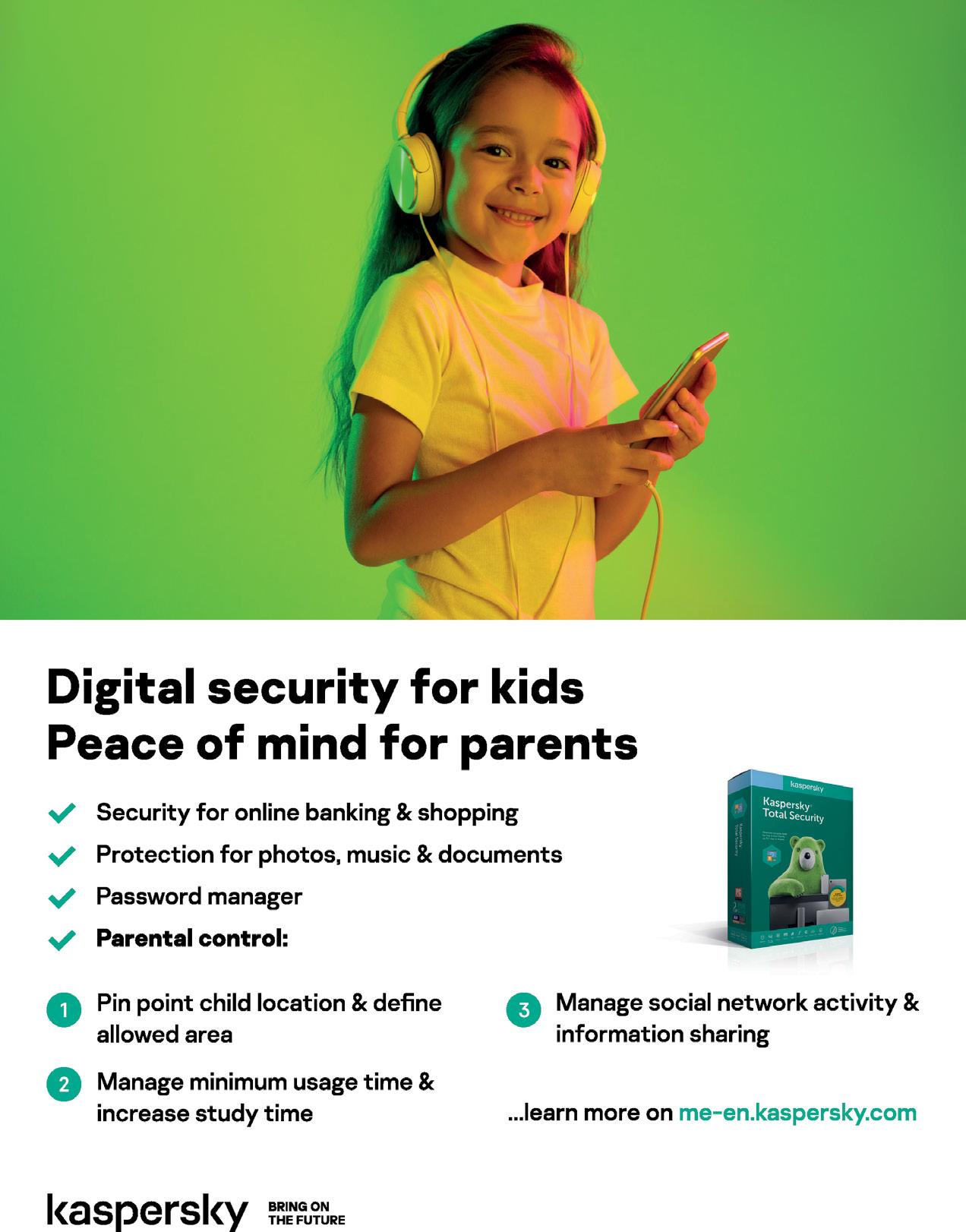
Imagine having a belly laugh with your friends. You are talking about something funny that has happened and you both laugh together. By laughing together endorphins are activated in both of you. Endorphins are the neurotransmitters that the body is producing when you, for example, overcome challenges or when you
are having fun. When you laugh together with others you all become more communicative, collaborative, and creative. This in turn will boost trusting relationships among you. When we trust each other, we can move mountains together. The world we live in is complex and by working collaboratively and with excellent communication skills, chances
Many daily decisions are made based on our emotions. Bigger decisions are usually filtered through our executive functions underpinned by the rational part of the brain
Yvette Larsson is an IB Educator and the Co-Founder of the Learning and Innovation concept AHA. She is an international Swede, who is passionate about applied neuroscience to enable societies to foster healthy relationships focusing on our joint human potential. Her work comprises the key question: What does it mean to be human in a global age of technology?
Yvette developed a sense of creativity and entrepreneurial mindset from growing up in Lapland, a UNESCO-protected area with omnipresent nature at her doorstep. She organizes global youth hackathons based on design thinking and projectbased learning, to enhance youth voice and agency. Yvette has developed well-being programs and advocates outdoor education and physical activity.

are higher that we can solve things better and create more sustainable societies.
In this article, I will explore the potential of applied neuroscience in enhancing relationship development, by examining the neurological mechanisms underpinning social interaction, the impact of the neurotransmitters’ responses on relationships, and the benefits
of incorporating neuroscience-based methodology into any teamwork, especially in learning environments.
Healthy relationships help create a more collaborative and peaceful world. I would like to point out that I am not a neuroscientist, but an educator and innovator in the field of learning, and have, for several years, researched and used

When we increase our awareness of how the brain works, how it responds to certain actions, and certain ways of communication, we can also improve our communication styles to be more inclusive, and collaborative
applied neuroscience methodologies in my work with teams of learners of all ages.
When working with teams of learners I like to begin by asking them this question: - What could be the possible capacity of our brain? We usually have quite a philosophical discussion about it. I like to make the analogy of the universe. -Is it infinite? Both the universe and the brain seem to hold answers to mindblowing information, and we seem to have just started to learn about both.
However, what we do know about the human brain is that it is a complex, powerful tool that plays a critical role in shaping social interactions and building relationships. The more we learn about it, the better we can understand the behaviors of ourselves and others.
The prefrontal cortex mediates our executive functions that are required for successful interactions, planning, and organizing ourselves. The limbic system is responsible for emotional regulation, essential for effective communication. Mirror neurons are responsible for understanding the emotional state of others and empathizing with them. Together, these areas enable humans to understand others’ emotions and respond appropriately to their social cues.
When making decisions, or acting upon something, you may experience a divide between the rational part of the brain and the emotional part of the brain. -It’s messy to be a human! We are frequently not as rational as we think we are. Many daily decisions are made
based on our emotions. Bigger decisions are usually filtered through our executive functions underpinned by the rational part of the brain.
When I work with individuals and teams, we start by looking at two components, our inter and intra- communication, and asking questions such as:
● How do I overcome challenges?
● What does my self-pep talk about?
● How do I portray myself to others?
● How successful are my communication and social skills?
● How well do I connect with others?”
The quality of our life is determined by the quality of our relationships. For example, the quality and the success of the work within a team are based on the interaction between the team members. The quality of learning is also determined by the quality of the relationships between the learners and the educator. When relationships are unhealthy, we become restless and unfocused and we keep coming back thinking about them.
Relationships are a fundamental aspect of human life, historically they even determined our survival from when humans began interacting with each other. They are influencing everything from personal happiness to professional success. However, building and maintaining healthy relationships can be challenging. The quality of interpersonal interactions is influenced by the activity of specific brain regions, as well as the way we respond to each other; the words we exchange, our actions or inactions towards each other, our body language, our facial expressions, and the tone of voice.
Let’s have a more in-depth look at applied neuroscience as such. It is a field that seeks to bridge the gap between the study of the nervous system and its application in the real world. It is transdisciplinary and combines principles from theoretical neuroscience, psychology, biology, education, leadership management, and other related fields to improve various aspects of human life, including relationships.
Applied neuroscience is a field that is gaining traction in learning environments and I am, in this article, pointing out why team leaders and educators must learn about it and use it when shaping sustainable relationships. I dare say, it’s essential for the shaping of peaceful societies.
When we increase our awareness of how the brain works, how it responds to certain actions, and certain ways of communication, we can also improve our communication styles to be more inclusive, and collaborative.
I invite you to take a closer look at the role of neurotransmitters in terms of shaping healthy relationships.
Social bonding is driven by the release of oxytocin, a neurotransmitter that promotes feelings of trust, empathy, and connection. Research has shown that by engaging in activities that promote the release of oxytocin, such as hugging, smiling, or maintaining eye contact, individuals can improve their social bonds, hence boosting their relationships. Oxytocin is first produced when a child is born, promoting the connection with the mother. Oxytocin is produced when we show love and care toward each other. It is even
When we work with teams, it’s beneficial for everyone to have a basic understanding of applied neuroscience to be able to communicate effectively and create a culture that promotes trust, collaboration, success, and well-being
produced just by looking at others being caring to each other or being in the same room, overhearing others speaking with warmth to each other. Oxytocin produces trust, and when trust is in the room, we become more collaborative, communicative, and creative. When it comes to trust, we scan every human encounter we make throughout the day, as in: is this a safe situation, is this a friendly person, will this person want the best out of me? If the answers are yes, you will then tick all boxes.
Serotonin is another neurotransmitter that plays an essential role in social behavior and mood regulation. When Serotonin is in the room we create a rapport with one another, by acknowledging the other person with a “hello”, “good-bye”, and “How are you?”.
When I talk to students, I refer to the “Avatar 2” movie and how they express the “I see you” gesture to each other. That is a good example of how serotonin is produced in us. The opposite is when there is a lack of serotonin. Let’s say you arrive at work and you say “hello” to a group of colleagues that you pass by, but nobody responds. Here there is a big chance that cortisol, survival instinct, kicks in “Why didn’t they say hello?”
By engaging in activities that promote the release of serotonin, such as exercise, mindfulness, or socializing, you can improve your mood, reduce stress, and enhance relationships. A simple example, from the world of school, is to stand outside the classroom and say hello to each student before entering the classroom. It is beneficial, as you have already created a relationship with the student for that particular lesson. At that moment you can also read your students’ mood of the day. If someone is sad, angry, or happy,
you can be curious about it, and offer support to someone who looks troubled, for example: “I can see that…” (serotonin), “Could I support you somehow?” (oxytocin).
Dopamine is the neurotransmitter that is associated with intrinsic motivation, it’s the hook in a book, and it’s the cliffhanger in a film. It is connected with our pleasure and reward system. It can be used to boost relationships by creating engaging and fun activities, setting goals, celebrating achievements, or engaging in playful activities. Dopamine enhances social bonds and boosts relationships. In an educational environment, it can be used to spark curiosity, inquiry, and lifelong learning. Dopamine is typically ignited when there is a challenge to solve. Think authentic project-based learning, think connecting with the outside world of a school, getting an answer from an email being sent to an influential person who may want to collaborate. It’s exciting, and excitement is what we want to achieve when it comes to learning together!
The downside of dopamine is the addictive behavior that can occur when, for example, scrolling social media apps. It’s important that young people become more aware and digitally literate to understand the underlying psychology of the apps. In Denmark, Dr. Imran Rashid is initiating a “borgerforslag”, a petition, where he proposes for the state to establish legislation about social media and young people.
Let’s get back to endorphins, the neurotransmitters that are responsible for pain relief and stress reduction. They can promote feelings of wellbeing, relaxation, and happiness. Endorphins are
in the room when we laugh together. Notice the word ‘together’. When somebody is being laughed at, cortisol is in the room. Engaging in activities that promote the release of endorphins, such as yoga, meditation, running, or spending time in nature, can help you manage stress and stay calm in challenging situations, thus enhancing relationships. If we bring this into the world of school, and the urgent need to focus more on learners’ well-being, it is of utmost importance that educators start including more physical activities and being outdoors, compared to traditional schooling. Outdoor education has a positive impact on young people’s well-being and academic achievements.
The last neurotransmitter that we will look at in this article is Cortisol, which is a stress hormone produced in response to threats. It usually has a negative impact on relationships. Cortisol can hinder memory and learning, causing the inability to retain and apply knowledge effectively. Cortisol is in the room when there is, for example, polarization, anger, worry, and fear. We will learn out of fear, but we will be less communicative, collaborative, and creative. In
a school environment, cortisol will be engaged when students, for example, are having a fight at the playground. It can also be two teenage students that are having an argument online. When these things are left unsettled the students will find it difficult to concentrate and learn. It is important to pick up these things rapidly and offer help to solve the situations. Hence, it is strongly encouraged for educators to teach applied neuroscience strategies in school, so that young learners are aware of what is going on in their brains when they argue, and that they may need a pause, to restart their dialogue.
What is also necessary to know about cortisol is that it is one of the neurotransmitters that work on our survival. Throughout the history of humanity, cortisol made us alert to possible threats. It simply helped us to survive.
When we work with teams, it’s beneficial for everyone to have a basic understanding of applied neuroscience to be able to communicate effectively and create a culture that promotes trust, collaboration, success, and well-being.
By using applied neuroscience to enhance relationships, we have the possibility to create more sustainable and peaceful societies.
It is strongly encouraged for educators to teach applied neuroscience strategies in school, so that young learners are aware of what is going on in their brains when they argue, and that they may need a pause, to restart their dialogue
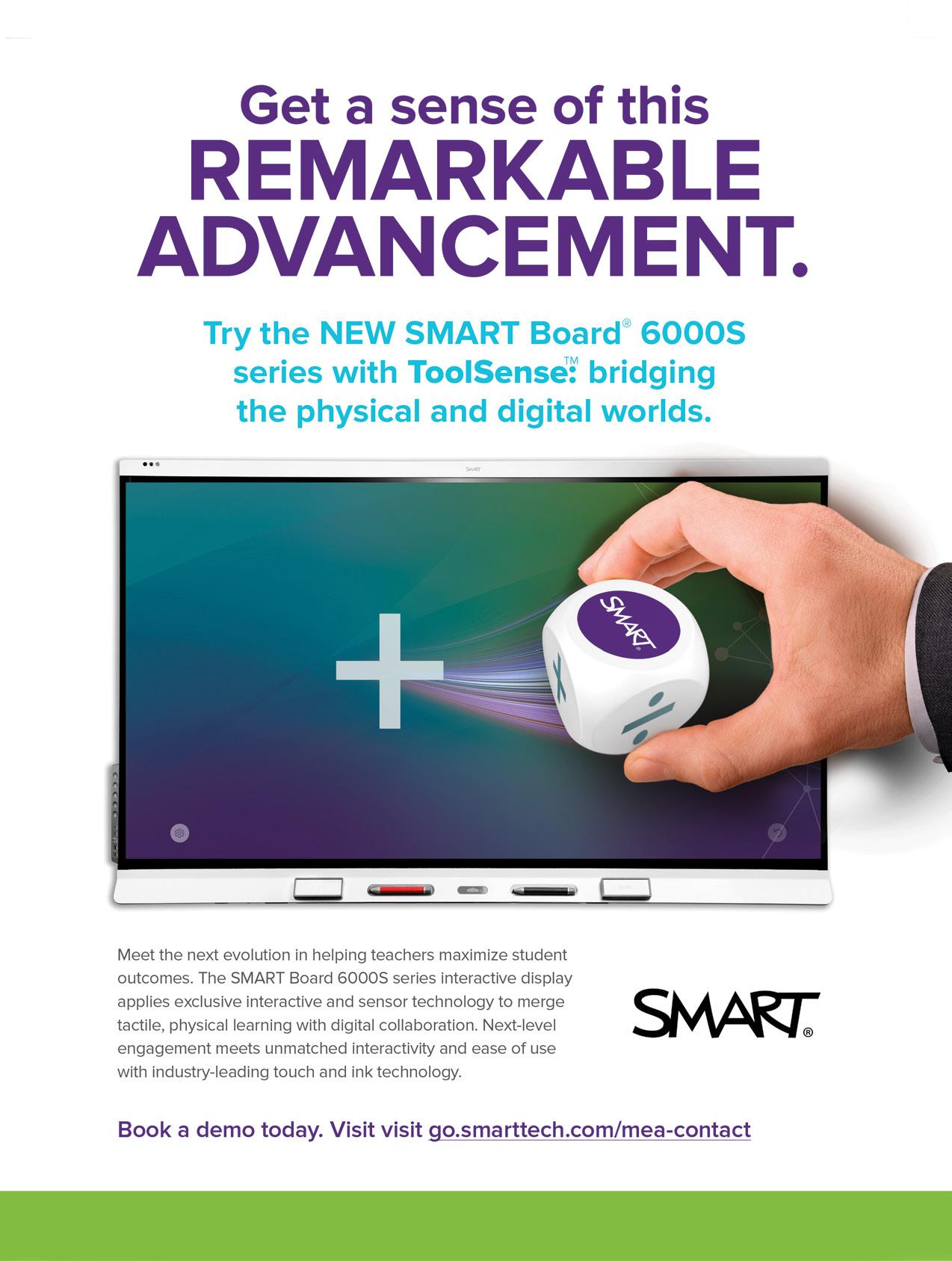
Whether a large or small district, there are some things that can be done to increase operational efficiency. These do not always have to be elaborate systems or processes. Most can be discovered by taking a fresh look at your operations as if this was your first day on the job. Some of these are simple changes but are sometimes difficult to implement because they go against the culture. But they can be implemented successfully by providing reasons and benefits of the change and making sure that everyone wins. One of the most time-consuming and difficult operational activities is the Request for Proposal (RFP) process. This article deals with (RFP) process specifically with new system implementations from the vantage point of a large district.
Debbie Karcher is an accomplished and creative IT executive who served as Chief Information Officer from Miami-Dade County Public Schools (M-DCPS), the fourth-largest school district in the US. During her 15-year tenure with M-DCPS, Debbie managed information technology operations and network infrastructure for more than 37,000 employees and 340,000 students and led the District’s IT strategic vision and long-range planning. Currently, as a K12 Education Technology Advisor, Debbie utilizes her diverse experience and understanding of current and future IT trends, as well as her proven ability to revitalize district operations through the implementation of enterprise systems, to direct information technology strategy for leading K12 edtech companies.

Over the past two years, many RFPs have been issued because of the funding made available through AARP and ESSA funding. Past experiences and policies have resulted in pages and pages of requirements often driven by the RFP process itself, hoping to prevent project failure and litigation. Usually, to protect the stakeholders, every functionality ever seen, thought of, or heard of is included.
In a recent RFP for an LMS, it listed 78 major requirements, with several sub-requirements. Every response must be reviewed, and the results documented by all the RFP voting members.
This requires a great deal of time and effort by the district’s procurement office, the vendors responding, and the selection team. All parties must make sure that every
By the time a district reaches the RFP stage of an initiative, the stakeholders have probably been visited by multiple vendors, seen several product demonstrations, and have a good understanding of product functionality
i is dotted and t crossed. If a vendor fails to respond to any part of the RFP, they can be eliminated. The more requirements, the more chance of oversight by all parties. It has also been my experience that a yes to check off a box may be true, but the expectation is barely met. The remainder of this article will discuss a very targeted approach to identifying core requirements, objectives that summarize functional requirements, pricing considerations that result in appleto-apple comparisons a pre-work stage that will identify gaps in the project scope, and the benefits of this approach.
By the time a district reaches the RFP stage of an initiative, the stakeholders have probably been visited by multiple vendors, seen several product demonstrations, and have a good understanding of product functionality. During this period the stakeholders should be documenting the functionality that is common in all the products. Whether it is Human Capital, Finance, Student Information Systems, (SIS), or Learning Management Systems (LMS) all similar modules will offer similar functionality. The differences such as the platforms, scalability, system architecture, reconfigurability, and the number of modules offered should also be noted. After meeting and learning about these systems, stakeholders should have a list of unique and required functionality exclusive to their districts.
Because of this research, the stakeholders can move from an RFP to an Intent to Negotiate (ITN). While both are used in a competitive bidding process, an ITN allows
an organization to enter negotiations with one or more vendors and lists only the general requirements without a specific outcome in mind. While an RFP has very specific requirements and vendors are awarded based on meeting criteria. The ITN should be limited to key operational goals and ultimately pricing. Once a provider is chosen through the ITN process the project will move into a pre-work stage.
The pre-work stage involves the district stakeholders and providers and will identify missing requirements, gaps in the project scope, and financial impact. At this time the district and provider can renegotiate the contract terms or if the financial and/ or resource requirement is too large the contract can be terminated. This protects the district from cost overruns and scope creep.
The pre-work stage should include t he following:
● Base system is configured to determine how well the system will work with the district data and infrastructure.
● Identifying integration points and understanding new processes
● Identifying testing and professional development requirements
● Stakeholders can test drive the system giving them a chance to see the solution in action.
All parties win by changing the RFP to an ITN. There is some risk because the number one choice may be rejected after the pre-work stage. But it is better to know the shortcomings prior to implementation than having a failed implementation or unhappy users. Both can create local headlines.
One of my students once exclaimed, “This book is like magic!”. As an educator, I can attest that nothing is more rewarding than hearing students’ amazement with educational materials. How I managed this you may ask? Well, I can assure you that I’m not a magician! I am, however, a big advocate for Augmented Reality-based learning!
In today’s world, technology has become an indispensable part of students’ education, particularly after the pandemic. Combined with stunningly new research reporting students’ attention span has decreased to just a few seconds. I had to stop and ask myself: How do I develop a curriculum that’s highly educational yet fun and exciting for K-12 students?
After conducting extensive research, I discovered various Augmented Reality (AR) applications in the educational sector. That’s when a light bulb went on. I instantly started thinking: How can I use AR to enrich my students’ workbooks? Which
Michalitsa Papasotiriou is an accomplished educational leader and Head of Educational Partnerships in Technokids, Greece. For more than 17 years, Mrs. Papasotiriou has been spearheading the creation of innovative and game-based learning curricula for over 50% of the private schools across Greece and Cyprus. Renowned for her groundbreaking work in advancing technological education for students of all ages, Mrs. Papasotiriou has received numerous accolades for her contributions to the field. She is a certified Microsoft Innovative Educator Expert, Fellow, and Trainer and holds the prestigious Microsoft Certified Educator certification. Mrs. Papasotiriou is also a sought-after keynote speaker at scientific conferences, where she shares her insights on the role of technology in education.

program should I use? Does it fulfill the required educational standards? How are my students going to react? Will they be receptive to the benefits of AR? What new skills will they be able to gain?
In this article, I’ll share with you everything I learned about implementing AR in K-12 education. I will also list some useful practical tips for educators so that you can also create curriculums that also feel like magic!
What is Augmented Reality?
Augmented Reality is a powerful technological tool. It has a wide range of applications spreading across the gaming, advertising, retail, healthcare, and educational sectors. AR overlays digital information, such as images,
text, or 3D models, onto the real world. This is typically achieved using a device with a camera and a screen, like a smartphone or a tablet.
For example, using an AR program I could easily transform traditional workbooks into interactive ones, where my students could scan a page and see a 3D hero. In some sections, I built an image sampling of the homework they had to do, and in others, I added a video teaching them coding skills.
Augmented reality (AR) has the potential to revolutionize education by providing immersive and interactive learning experiences. Especially in K-12 education, it enables students to interact
AR makes learning more accessible and inclusive to students with disabilities. By using AR audio or visual cues, you can create educational (and fun!) content for students with visual or hearing impairments
with digital content, engage in exciting activities, and gain new skills quickly and effortlessly. Here’re some ways educators can utilize AR to design interactive learning experiences:
● Interactive textbooks/Workbooks: Use AR to create interactive textbooks/ workbooks using multimedia content where students can interact with digital content in real time. With the help of 3D models and animations, you can illustrate key concepts and simplify complex concepts.
● Games and quizzes: Use AR to create educational games and quizzes, which let’s face it, are more engaging than traditional methods. You can translate your learning goals into puzzles, challenges, and even scavenger hunts, where students learn new information by exploring their surroundings and scanning objects to uncover hidden information. Nonsurprisingly, even math problems can be solved with AR!
● Visualize abstract concepts: Use AR to help students visualize, memorize, and better understand abstract concepts. For example, you can develop 3D models of objects, to teach students about the human body and its organs.
● Simulate real-life scenarios: With AR you can simulate a surgery, a chemistry experiment, a volcano eruption, or even teach students foreign languages using real-life scenarios. For example, you can overlay virtual foreign street signs or restaurant menus in a realworld setting to teach students new languages, while developing problem-solving skills.
● Field trips and virtual tours: Take your students to virtual field trips and tours and empower them to explore new places in a more interactive way. The best application of this functionality is used to teach students history. You can bring historical events and figures to life by overlaying digital content on top of real-world locations or artifacts so that students can explore ancient ruins or interact with historical figures.
● Create tailored AR content: Students can create their own AR content (e.g., digital stories, interactive projects, etc.) to create a personalized learning experience. Astonishingly, some AR apps adjust the difficulty of a lesson based on the student’s performance and abilities.
● Accessibility: AR makes learning more accessible and inclusive to students with disabilities. By using AR audio or visual cues, you can create educational (and fun!) content for students with visual or hearing impairments.
Tips for educators: What to consider before integrating AR into your classroom
If used correctly, AR is a revolutionary tool that can enhance and support learning. If you’re an educator eager to successfully integrate AR into your classroom, then you need to be aware of the following pitfalls:
● Identify learning goals: Start by identifying the learning goals you want to reach with the help of AR. What do you hope to achieve? Failing to consider this may result in AR becoming a novelty or distraction for students.
● Select appropriate AR tools: There are many AR tools available, and you should select the one that best fits your learning goals and students’ needs. Other factors to consider are costs, accessibility, and ease of use.
● Content development: Develop AR content that is aligned with your learning goals and students’ needs. AR content should be interactive, and engaging, and provide
opportunities for students to explore digital content in real-world scenarios.
● Integrate AR into lesson plans: Integrating AR into lesson plans should be done in a supportive way. For most students, it might be a new experience, so make sure to provide them with guidance and feedback throughout the lessons.
● Assess effectiveness: Maximize the success of AR by evaluating the effectiveness of your lessons in terms of goals achievement. Use regular assessments, surveys, and feedback to refine the AR use and identify improvement areas.
The most important aspect of AR in education is its ability to make learning more interactive and immersive, allowing students to explore concepts in a more tangible and memorable way. It empowers educators to create a more dynamic learning environment that drastically improves student learning outcomes.
Going beyond educational curriculums, AR helps students to develop important social and communication skills. It provides opportunities for them to work collaboratively and share new experiences, which deepens their relationships.
In conclusion, although AR is not real magic, it sure does feel like that to students. When I developed my first AR workbooks, I never imagined the excitement and enthusiasm they would show. Therefore, I do encourage all K-12 educators to explore the new possibilities AR offers and adopt their learning methods into the new normal.
Integrating AR into lesson plans should be done in a supportive way. For most students, it might be a new experience, so make sure to provide them with guidance and feedback throughout the lessons
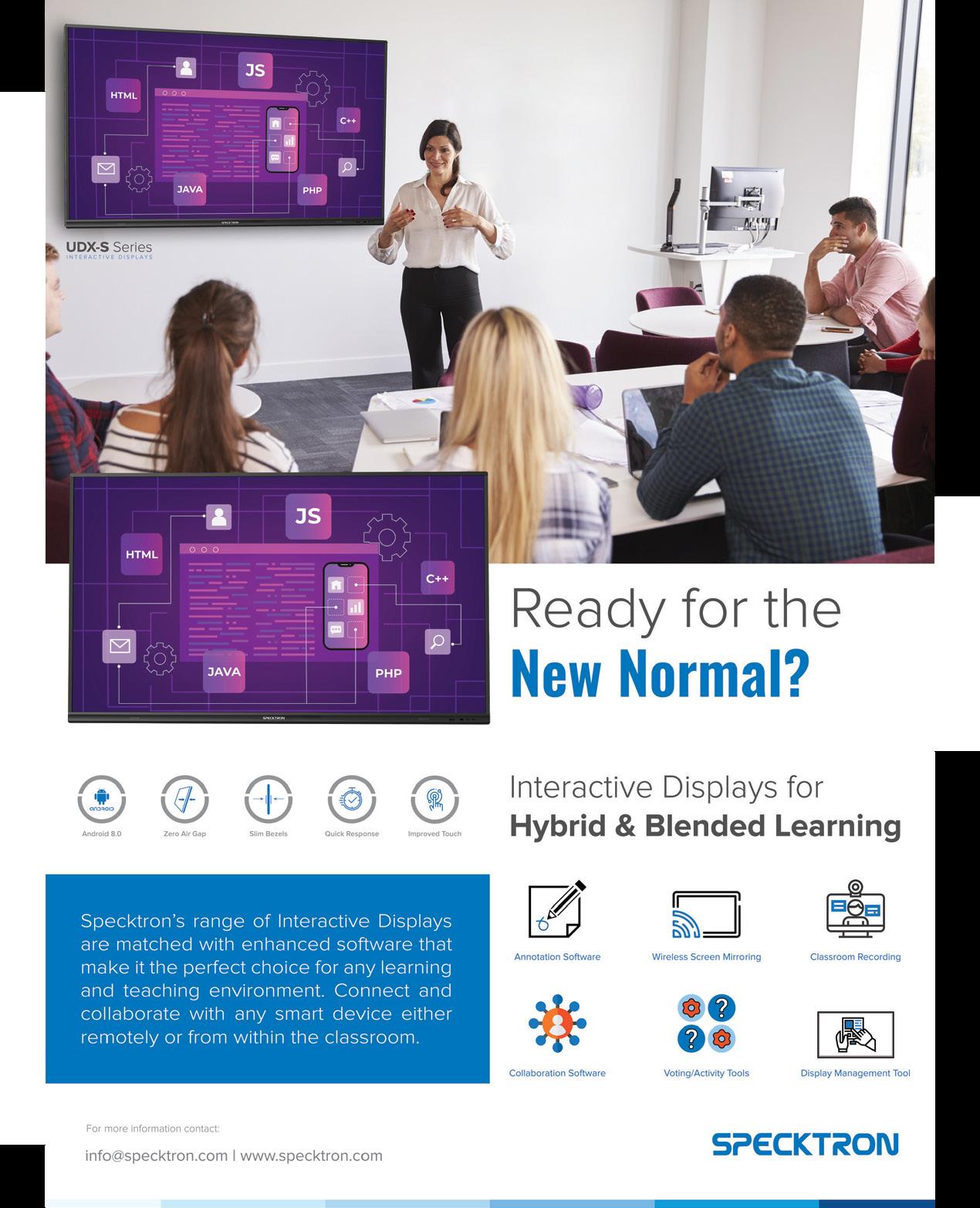
Your Talent Acquisition should not be one size fits all. This article will discuss what a “passive candidate” means, why you should be focusing on this particular group, and exactly how you can start targeting these individuals. This is the key to filling those difficult positions.
Regardless of the industry, it seems like there are always extremely challenging positions that are next to impossible to fill. Whether the requisition has been open for a very long period, and you cannot seem to find strong candidates, or perhaps it is one of those roles that tend to have high turnover. Either way, you seem to have exhausted all of your traditional talent acquisition avenues. This is where you get strategic.
John Assunto is a Managing Partner at Worldbridge Partners, President, CEO, and Founder of the Education Division at the Hudson Group. He is responsible for building an executive search team catering to recruiting in the EdTech, Online Education, workforce development, non-profit and education sectors. His career spans over 35 years in both higher and corporate education, workforce development in sales, marketing, and executive roles. His team operates within a vast network of Colleges and Universities, Venture Capital/Private Equity, Private Education, and Pre-K-12 EDU with an interest in sourcing top talent to manage their educational interests. John has personally been responsible for achieving the highest number of placements recorded from an individual in the firm’s history. Each year, he has been awarded outstanding achievement recognition from 2 different major search consulting organizations and ranked in the top 1% with Management Recruiters International - The World’s Largest Executive Search Firm. He is an active member of several associations and a participant at industry trade shows and conferences as well as several state education associations.

Passive candidates are often overlooked. You might be thinking, “What is the point of targeting individuals who are not even looking for a new job?” Remember, just because someone is not currently looking does not mean they could not be swayed. These are some reasons why you should consider switching your focus to passive candidates:
● Recruiting for your industry is highly competitive, and the standard recruiting pools could be running dry or drying up all of your resources.
● These individuals do not need to take a job (they already have one), so they are more likely to have relevant skills and make a move only if they feel like are a stronger fit.
● This Talent Acquisition allows you to be specific about the type of experience or skills you are looking for, which can help grow and strengthen your team.
These candidates are not actively looking for a new position (which includes an estimated
78% of the global workforce), so you will not necessarily find them by posting on the regular job boards. Here are some of the best venues to reach passive talent:
● Referrals: This is one of the best recruitment venues, period. Talk to your star employees; chances are they know someone with a similar set of skills and work ethics that could be interested in a new opportunity. Offer a referral bonus as an extra incentive.
● Social Media: LinkedIn and Facebook are both effective ways to source passive talent. You can use filters to find people with the right work experience and send direct messages on LinkedIn. You can also post job openings in relevant social interest groups on Facebook.
● Recruiters: Tapping a professional to help expand your job search is always a good idea. Professional recruiters typically have large recruiting networks and contacts that can significantly extend your reach.
Recruiting for your industry is highly competitive, and the standard recruiting pools could be running dry or drying up all of your resources

